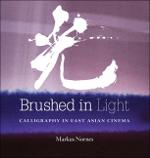Brushed in Light
External Review of Whole Manuscript
Calligraphy in East Asian Cinema
| dc.contributor.author | Nornes, Abé Markus | |
| dc.date.accessioned | 2021-03-19T12:33:14Z | |
| dc.date.available | 2021-03-19T12:33:14Z | |
| dc.date.issued | 2021 | |
| dc.identifier | OCN: 1227307230 | |
| dc.identifier.uri | https://library.oapen.org/handle/20.500.12657/47411 | |
| dc.description.abstract | Drawing on a millennia of calligraphy theory and history, Brushed in Light examines how the brushed word appears in films and in film cultures of Korea, Japan, Taiwan, Hong Kong, and PRC cinemas. This includes silent era intertitles, subtitles, title frames, letters, graffiti, end titles, and props. Markus Nornes also looks at the role of calligraphy in film culture at large, from gifts to correspondence to advertising. The book begins with a historical dimension, tracking how calligraphy is initially used in early cinema and how it is continually rearticulated by transforming conventions and the integration of new technologies. These chapters ask how calligraphy creates new meaning in cinema and demonstrate how calligraphy, cinematography, and acting work together in a single film. The last part of the book moves to other regions of theory. Nornes explores the cinematization of the handwritten word and explores how calligraphers understand their own work. | en_US |
| dc.language | English | en_US |
| dc.subject.classification | thema EDItEUR::A The Arts::AT Performing arts::ATF Films, cinema::ATFA Film history, theory or criticism | en_US |
| dc.subject.other | film studies | en_US |
| dc.subject.other | calligraphy | en_US |
| dc.title | Brushed in Light | en_US |
| dc.title.alternative | Calligraphy in East Asian Cinema | en_US |
| dc.type | book | |
| oapen.identifier.doi | 10.3998/mpub.11373292 | en_US |
| oapen.relation.isPublishedBy | e07ce9b5-7a46-4096-8f0c-bc1920e3d889 | en_US |
| oapen.relation.isbn | 9780472132553 | en_US |
| oapen.collection | Toward an Open Monograph Ecosystem (TOME) | |
| oapen.pages | 175 | en_US |
| peerreview.anonymity | Double-anonymised | |
| peerreview.id | d98bf225-990a-4ac4-acf4-fd7bf0dfb00c | |
| peerreview.open.review | No | |
| peerreview.publish.responsibility | Scientific or Editorial Board | |
| peerreview.review.decision | Yes | |
| peerreview.review.stage | Pre-publication | |
| peerreview.review.type | Full text | |
| peerreview.reviewer.type | External peer reviewer | |
| peerreview.title | External Review of Whole Manuscript | |
| oapen.review.comments | The proposal was selected by the acquisitions editor who invited a full manuscript. The full manuscript was reviewed by two external readers using a double-blind process. Based on the acquisitions editor recommendation, the external reviews, and their own analysis, the Executive Committee (Editorial Board) of U-M Press approved the project for publication. |

